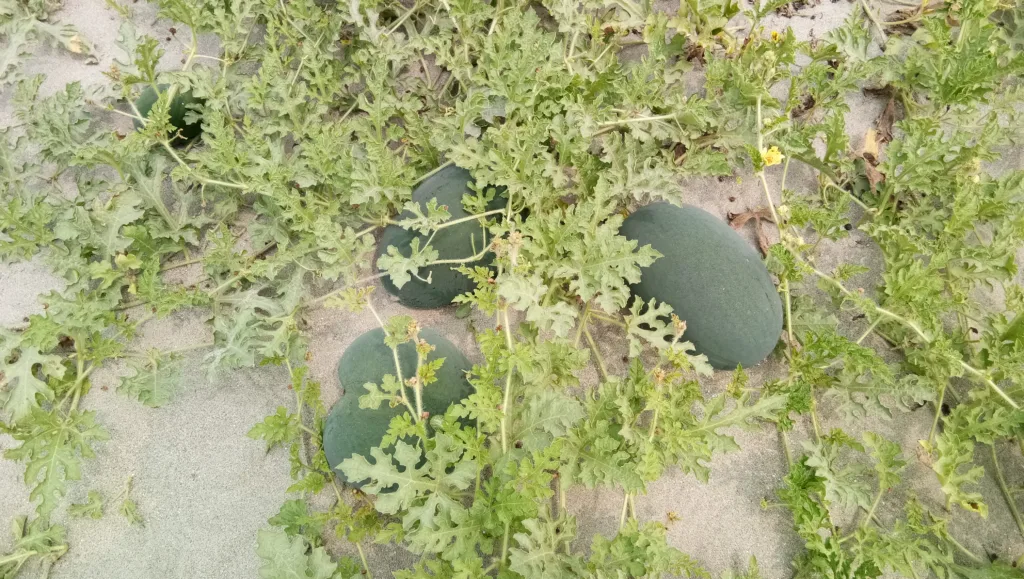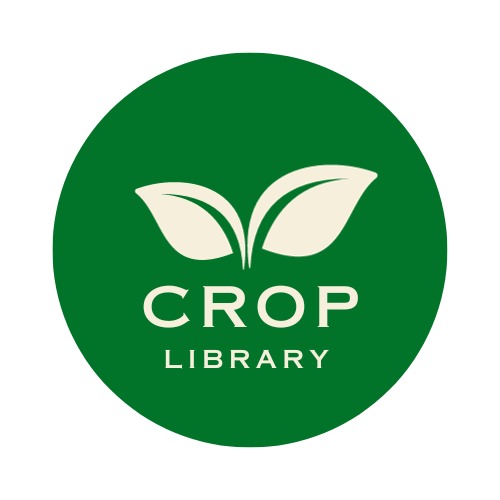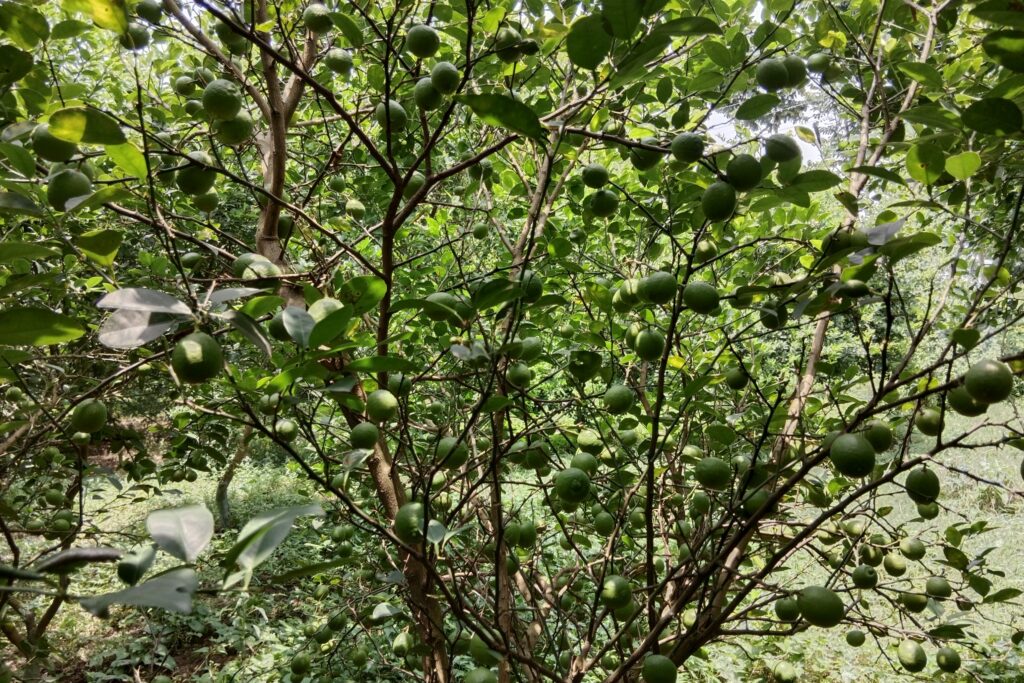Watermelon (Citrillus lanatus L.) is part of the Cucurbitaceae family and is thought to have originated from Africa. Watermelons are not only tasty in the summer but also fun to grow. If you ever wondered how to make your watermelons bigger, using the right fertilizers is the trick. Today, we’ll discuss the important nutrients and fertilizers to help your watermelons grow larger and juicier.

The decision to fertilize depends on the existing soil conditions and the specific growth stage of the watermelon plant. Whether it’s an early seedling or in the flowering phase, each stage demands distinct nutritional requirements. In the initial stages, such as the emergence of seedlings, it’s advisable to use fertilizers with a nitrogen base. As the plant progresses into the flowering stage, it’s essential to transition to fertilizers rich in phosphorus, potassium, Calcium, and Boron. Here are the top six fertilizers if applied properly increase the size as well as yield of watermelon fruit.
Major fertilizers to Increase Watermelon size
Compost
Ensuring the health of your watermelon plants involves various practices.
- Soil enriched with compost during the initial planting phase promotes robust vines and fruit development. Before transplanting watermelon seedlings, incorporate well-rotted compost into the top 15 cm of soil.
- Enhance the soil’s protective layer by adding 8-10 cm covering of straw, shredded newspaper, or grass clippings around the melon plants.
- Apply 0.675 kg of cattle manure in each planting hole.
- The yield of watermelon fruits increases with higher levels of cattle manure supplementation, especially when enriched with nitrogen and phosphorus.
These practices collectively contribute to creating an optimal environment for the successful growth and productivity of watermelon plants.
Nitrogen (N)
- It is advised to apply nitrogen-containing fertilizers to watermelon plants in their early stages of development.
- The yield parameters, such as the length of the fruit, the number of fruits per plant, and the average weight of each fruit, showed a notable increase as the nitrogen levels rose.
- Apply the first dose of nitrogen as a basal application in the hole before transplanting the seedling or as soon as your watermelon seedlings emerge through the ground. This first application gives a good start, encouraging healthy leaf development that is necessary for photosynthesis and the general health of the plant.
- Consider applying a second round of nitrogen just before or as soon as the vines start running, typically after one month of transplanting.
- Application of a higher nitrogen dose of 125-150 kg/ha gives the highest fruit yield and weight per plant and hectare.
- Watermelon plants prefer to take nitrogen in the form of nitrate (NO3-). Watermelon plants can also absorb nitrogen in the ammonium form (NH₄⁺); however, they tend to be more comfortable with nitrate nitrogen uptake. Therefore, it is frequently more successful to utilize fertilizers that offer nitrogen in the nitrate form, such as calcium nitrate, to encourage the ideal growth and development of watermelon plants.
- It’s important to remember that ammonium, a form of nitrogen fertilizer, poses problems with the development of melons. This fertilizer reduces overall quality and hinders growth. As such, fertilizers such as urea, ammonium sulfate, and other nitrogen-based ammonium fertilizers should be avoided when growing melons.
- Furthermore, as excessive nitrogen fertilizer treatment might result in decreased blooming, fruit set, and eventually poorer yields, it should be avoided both during and after the flowering stage.
- Apply fertilizer once more when the fruit has recently appeared. You can apply a side dressing to the vines before cultivation, using a 34-0-0 fertilizer at a rate of 1 pound (454 g.) per 100 feet (30 m.) of row or calcium nitrate at 2 pounds (907 g.) per 100 feet (30 m.) of row.
Phosphorus (P)
- During the transplanting process, it is recommended to administer a phosphorus-rich starter solution at a rate of half a pint per plant. You can create the starter solution by dissolving three pounds of soluble 15-30-15 in 50 gallons of water.
- To encourage maximum fruit production, it is advised to switch to fertilizers containing phosphorus and potassium when watermelon plants reach the flowering phase. These nutrients are vital for fruit development and are necessary for watermelons to reach their full, delicious potential. Changing to a fertilizer high in potassium and phosphorus as the flowering phase starts is like giving your watermelons their secret sauce. Furthermore, as the fruit is mature, fertilizer with greater potassium and phosphorus levels is applied, which aids in the fruit’s development and ensures a successful and tasty harvest.
- The average fruit weight was increased significantly with a higher dose of phosphorus.
Potassium (K)
A higher application of potassium has been associated with characteristics that are more indicative of yield. The deep red color of the fruits and their higher sugar content are both attributed to potassium, which makes watermelons sweeter in their final stages. For fruit production to be maximized per plant and hectare, the ideal potassium dosage per unit area is essential. Research shows that greater potash doses—such as 60 kg/ha—often result in the highest yields. To guarantee the general well-being, excellence, and yield of the crop, watermelon farmers must carefully monitor and modify their potassium dosages.
Calcium (Ca)
Melons are susceptible to physiological problems like Blossom End Rot, just like tomatoes. It’s critical to offer a sufficient quantity of soluble calcium and boron to reduce this risk. Consider using calcium fertilizer as a side dressing when the plants start to bear fruit, usually about the time the vines grow to a height of one to two feet.
Moreover, calcium is essential for the development of the cell wall, which gives the plant its structural integrity. This is especially crucial to produce robust and durable fruit in watermelons. In addition, calcium promotes the intake and movement of nutrients throughout the plant, which benefits plant health in general. Appropriate calcium levels enhance fruit texture and lower the possibility of problems after harvest.
Boron (B)
To enhance watermelon productivity, one approach is to improve the pollination process, and a method developed for increasing pollen production involves providing micronutrients such as Boron. Boron is crucial for plant growth, playing a role in meristematic tissue development, flowering, and fruit maturation.
Applying Boron fertilizer to plants can accelerate metabolism, leading to faster flowering. To address Boron deficiency, which can result in both vegetative and reproductive defects, it is essential to supply sufficient quantities. For an effective response in watermelon flowering, the application of Boron fertilizer is beneficial. The recommended application rates include 2kg/ha of boron.
Water Application to Increase Watermelon Size with Fertilizers.
As the name suggests watermelon needs a regular supply of water. Water application is crucial for watermelon cultivation as it directly influences plant growth, fruit development, and overall yield. Adequate and consistent watering is essential during the entire growing season, especially during periods of flowering, fruit setting, and maturation. Water supports nutrient uptake, helping in the synthesis of sugars and essential compounds. Proper irrigation is vital for preventing issues like blossom end rot and ensuring optimal fruit size and quality. Additionally, sufficient water helps regulate temperature, mitigating stress during hot periods. Overall, strategic water management is fundamental for promoting healthy watermelon plants and achieving a successful harvest.
FAQs
Q1. How do you increase watermelon flowering?
Follow the following strategies to increase flowering in watermelon:
- Apply plant growth regulators like auxins and gibberellins, to stimulate flower development.
- Supply adequate nutrients like nitrogen, phosphorus, and potassium at different growth stages.
- Adequate watering is crucial, especially during flowering stages, to prevent water stress.
- Pruning excess foliage redirects energy towards flowering.
- Applying micronutrients, particularly boron, can enhance pollen production, further encouraging prolific flowering.
Q2. What are the deficiencies of watermelon?
Major deficiencies generally seen in watermelon plants are as follows:
- Nitrogen deficiency:
- When a plant lacks nitrogen, the lower leaves of the plant begin to yellow at the middle rib and move in a “V” pattern toward the outside edge of the leaf.
- The symptoms of deficiencies usually appear during the watermelon’s vegetative growth stage.
- Apply the appropriate dose of nitrogen in various split doses during the vegetative development phases to address such deficiencies.
- Calcium deficiency:
Calcium deficiency in watermelon manifests as Blossom End Rot, a physiological disorder affecting the fruit. The symptoms include dark, sunken areas on the blossom end of the watermelon. This condition arises when there is insufficient calcium available for proper fruit development. Calcium is essential for cell wall formation and integrity. Inadequate calcium leads to weakened cell walls, making the fruit susceptible to rot. Factors such as imbalanced soil pH, irregular watering, and high potassium or magnesium levels can contribute to calcium deficiency. Addressing the issue involves ensuring proper calcium levels through soil amendments, foliar sprays, or adjusting cultural practices.
- Boron deficiency:
Boron deficiency in watermelon appears as abnormal fruit development, cracking, and hollow heart.
Q3. How do you know if you are overwatering watermelon?
Overwatering watermelon is evident through various signs. The soil becomes excessively wet, leading to poor aeration and potential root rot. Plant leaves may exhibit yellowing, wilting, and a general lack of vigor. The watermelon vines may become more susceptible to diseases due to prolonged moisture. Additionally, the presence of puddles or waterlogged areas around the plants indicates excessive watering. To avoid overwatering, ensure proper drainage, allow the soil to partially dry between watering, and monitor the overall health of the plants. Adjust watering practices based on specific environmental conditions to maintain optimal soil moisture for healthy watermelon growth.


